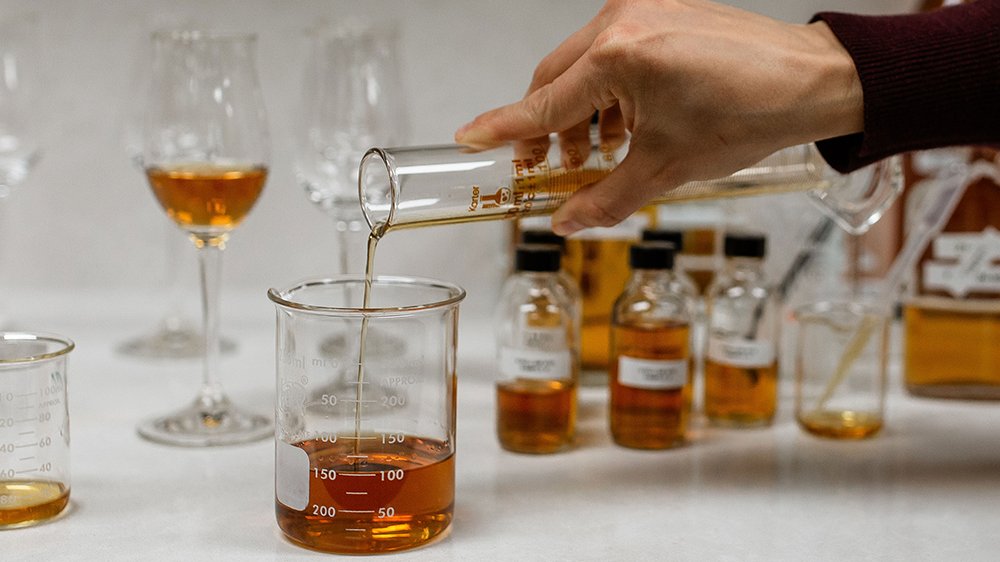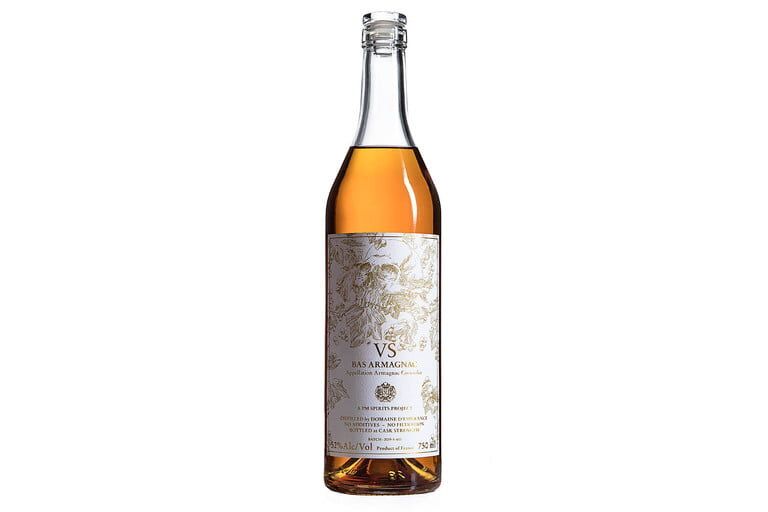The Whiskey Tribe review of Navazos Palazzi Malt Whiskey (Palo Cortado). Spanish malt finished in a unique and rare style of Sherry cask.
Whiskey,DOMAINE D’ESPÉRANCE
‘We Stand for Non-Bullsh*t Products’: Why Blended Whiskey Makers Are Openly Discussing Their Spirits
Bourbon, Nicolas Palazzi, Whiskey, Robb ReportFrom Barrell Craft Spirits to Mic Drop, a new wave of NDP's talk eschewing "tradition" to make unique bourbons.
Joe Beatrice spends his day tasting whiskey, assessing the character of the contents of barrel after barrel throughout his multiple maturation warehouses. It’s one of his jobs, along with his two full-time blenders, to know the flavor profiles of the over 10,000 casks of bourbon and rye they own. But while this is standard work at a distillery, what’s different about Barrell Craft Spirits, the company Beatrice founded in 2013, is that it’s never distilled a drop.
Barrell is one of the most celebrated of the new wave of non-distilling producers, or NDPs. In and of themselves, NDPs are nothing new; if you drink American whiskey, you’ve probably enjoyed many of them over the years, perhaps without even knowing it. Bulleit, for example. Or Redemption Rye, Templeton or Angel’s Envy. The list goes on.
Historically, NDPs haven’t been eager to highlight the fact that they don’t make their own whiskey. Bourbon, it was believed, was all about tradition, so there was an incentive to invent a fanciful yarn to suggest authenticity. But Barrell tells you as much as it can about what’s in the bottle, which might include where the whiskey was purchased and how old it is. “There’s no fake backstory,” Beatrice says. “I didn’t come across the blending recipe in my grandfather’s trunk. I didn’t get it from a Conestoga wagon.” The company simply buys barrels of liquid distilled by others, then employs in-house expertise to blend them into something exciting and new. “The notion that it can only be good if you make it yourself is crazy,” Beatrice says.
Since 2007, a distillery called High West in Park City, Utah, has been quietly leading the way on the concept of honest sourcing. Master distiller Brendan Coyle ranks transparency at “the top of the values list of the company.” High West, along with other pioneers such as Smooth Ambler, distills its own whiskey but also sources it from others (largely from the massive MGP plant in Indiana), using blending and imagination to concoct something unique, such as A Midwinter Night’s Dram, a blend of two types of rye finished in French-oak port barrels and released every fall to eager drinkers and collectors. Coyle likens blending to art; this hybrid approach, he says, is akin to having more colors with which to paint.
From left to right: Barrell Bourbon, A Midwinter Nights Dram whiskey, Mic Drop. Barrell Craft Spirits/High West Distillery/Mic Drop
Wherever you look in the NDP market these days, you’ll see a new transparency that feels radical, whether it’s the hyper-limited Mic Drop—its website diligently recounts every minute decision that went into the bottle—or the enormous Bardstown Bourbon Company, which literally prints the pedigree of its purchased and blended Discovery series right on the label. Bardstown is sitting on thousands of its own distilled barrels, still too young to use, but Dan Callaway, the company’s VP of product development, says that even when its barrels come of age, Bardstown will continue to purchase whiskey for blending. “Discovery series is an opportunity to create something new and special,” he says. “Our story is our team. We want to show people the whole process.”
Nicolas Palazzi, creator of Mic Drop, puts it more plainly still: “We stand for non-bullshit products,” he says. “To be honest, it doesn’t sound very radical to me.”
What is Armagnac? Exploring Cognac’s Older Cousin
Armagnac, cognac, DOMAINE D’AURENSEN, Domaine d’Esperance, DOMAINE D’ESPÉRANCE, L'Encantada, PM SpiritsHow Armagnac is Made
“Essentially, Cognac is more like Tequila, and Armagnac is more like mezcal in the way it’s produced,” says Nicolas Palazzi, owner of importer and distributor, PM Spirits, “but not in flavor [although it can occasionally share similar notes with the agave spirit].” Armagnac is a bit more artisanal in nature, and every producer creates a product to their own proof and style making it a fan favorite for spirit nerds.
Armagnac is allowed to use 10 grape varieties in production, but typically only use four: Ugni blanc, Baco, Folle Blanche, and Colombard; whereas in Cognac they use around 99% Ugni blanc. More variety in the raw material allows for Armagnac to express a diversity in flavor that Cognac cannot. When you also consider the terroir — the soil, climate, and hand of the maker — Armagnac truly distinguishes itself in character.
“There is something really interesting in picking grapes and making a product that has a true personality and seeing that product at a stage where it hasn’t become a very popular spirit [like Cognac] that has been modified to try to appeal to the general public,” says Palazzi. “Armagnac is very terroir-driven, it feels like you can connect with the history of the land and its rich history.”
In terms of distillation, 95% of Armagnac production is distilled with an alembic column still, whereas Cognac has to be pot-distilled, Palazzi notes. “Some are using pot still as well,” he says, although it’s a rarity.
After being distilled, the liquid is typically aged in 400-liter French oak casks — typically local, Gascony oak — and is then classified as VS, VSOP, Napoleón, or XO (Hors d’âge), depending on how long it has been aged for, with XO being the oldest age statement meaning the distillate has seen a minimum of 10 years in the cask. It’s also common for Armagnac producers to release vintages, like wine, but this will be more of a rarity as the category continues to rise in popularity.
After aging, the Armagnac is either bottled at cask strength, or proofed down. “The reason why Cognac is typically 40% ABV is to stretch out the amount they’re able to produce because of the demand,” Palazzi notes. “In Armagnac, you’ll find more full-proof bottling because they aren’t under the pressure of hitting numbers so they can focus on creating the best product possible [regardless of proof].” This means that each bottle will have its own distinct character, which isn’t always the case with other brandies.
Some producers to note are: Domaine Boignères, Château de Pellehaut, Domaine Espérance, Domaine d’Aurensan, but there are many others creating exceptional brandies as well in the region.
Cobrafire Eau-de-Vie de Raisin
An unaged blanche (white) Armagnac produced in the Bas Armagnac sub-appellation. It’s an undiluted, unadulterated expression of exactly what a French brandy should taste like. At 51.5% ABV, it’s also begging to make it into your next Martini.
PM Spirits VS Bas Armagnac Overproof
Importer PM Spirits teamed up with renown production house, Domaine Espérance, to release their own label of VS overproof (51.7% ABV) Armagnac. For the price you’ll pay, it’s an absolute steal and must-try.





